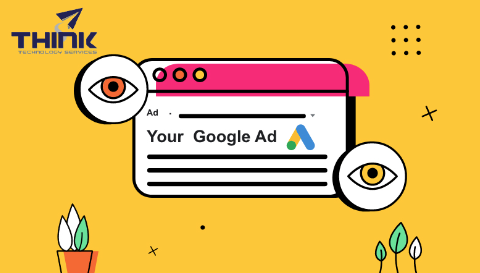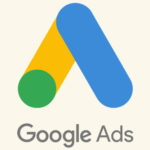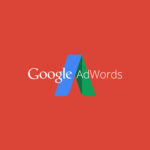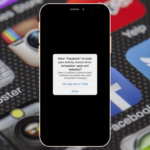All 22 Types of Google Ads (& When to Use Them)
Google Ads is a strong advertising platform that helps businesses reach customers on different digital channels. With its extensive range of ad formats, targeting options, and bidding strategies, Google Ads offers something for everyone. However, understanding when and how to use each type of ad is crucial to maximize your ROI. In this article, we’ll explore all 22 types of Google Ads and provide insights into when to use them.
1. Search Ads
When to Use: Search ads are the most common type of Google Ads, appearing at the top or bottom of Google search results. Use them when you want to capture high-intent users who are actively searching for specific products or services.
If you have an online store selling men’s shoes, search ads can reach people looking to buy men’s sneakers.
2. Display Ads
When to Use: Display ads appear on Google’s partner websites in various formats like banners, images, and text. They are ideal for brand awareness, retargeting, and reaching users who are browsing online.
You can use display ads to promote a new product by showing attractive ads on websites related to your product.
3. Video Ads
When to Use: Video ads are shown on YouTube and other Google video partner sites. Use them for storytelling, product demonstrations, or to build brand awareness through engaging video content.
Example: A video ad can show how a new software tool works to reach potential customers effectively.
4. Shopping Ads
When to Use: Shopping ads display products directly in the search results with images, prices, and store names. They are perfect for e-commerce businesses looking to drive sales by displaying products to users searching for them.
For example, a store that sells electronics can use shopping ads to show laptops or smartphones in search results.
5. App Promotion Ads
When to Use: You should use app promotion ads to drive app downloads and engagement. These ads can appear in search results, Google Play, YouTube, and within other apps.
Example: A gaming app could use these ads to attract new players by promoting special in-game rewards for first-time users.
6. Local Search Ads
When to Use: Local search ads appear on Google Maps and are ideal for businesses with physical locations, like restaurants or stores, aiming to attract local customers.
Example: A coffee shop could use local search ads to attract nearby users searching for “coffee near me.”
7. Responsive Search Ads
When to Use: Responsive search ads automatically adjust to show the best combination of headlines and descriptions. They are useful for improving ad relevance and performance by leveraging multiple variations.
Example: A travel agency can use responsive search ads to display different vacation packages and destinations. Advertisers can tailor the ads to highlight what users prefer. This allows the agency to showcase a variety of options that appeal to potential customers. By focusing on users’ preferences, the agency can increase the chances of attracting more bookings.
8. Smart Campaigns
When to Use: Smart campaigns are automated campaigns that simplify ad management for small businesses. They are best for businesses with limited time or experience in managing ads.
Example: A small bakery can use smart campaigns to promote daily specials easily. This helps them save time on managing ads. They don’t have to spend a lot of time on advertising.
9. Discovery Ads
When to Use: Discovery ads appear in Google Discover, YouTube, and Gmail. They are great for reaching users who are not actively searching but may be interested in your products based on their behavior and interests.
Example: A fashion brand could use discovery ads to showcase its new summer collection to users browsing through fashion content on Google Discover.
10. Gmail Ads
When to Use: Gmail ads appear in users’ inboxes, offering a way to reach potential customers directly. They are useful for promoting special offers, newsletters, or any content that encourages direct engagement.
Example: An online course provider could use Gmail ads to promote a limited-time discount for new subscribers.
11. Call-Only Ads
Businesses that rely heavily on phone calls, such as service-based industries, should use Call-only ads. These ads encourage users to call your business directly from the ad.
Example: A plumbing service could use call-only ads to generate immediate service calls from customers with urgent needs.
12. TrueView Ads
When to Use: TrueView ads are a type of video ad on YouTube that allows users to skip the ad after 5 seconds. They are ideal for engaging content that captures attention quickly.
A tech company can use TrueView ads to promote a new gadget. They can showcase the gadget’s main features at the start of the video. This helps grab the viewer’s attention. An effective way to advertise the product is.
13. Outstream Ads
When to Use: Outstream ads are video ads that appear outside YouTube, such as on partner websites and apps. They are great for increasing video reach without relying on YouTube.
Example: A car manufacturer could use outstream ads to showcase a new model across various automotive-related websites.
14. Bumper Ads
When to Use: Bumper ads are 6-second non-skippable video ads that are perfect for concise messaging. They work well for brand awareness and quick, impactful messaging.
Example: A beverage company could use bumper ads to promote a new flavor with a catchy, memorable message.
15. YouTube Masthead Ads
When to Use: YouTube Masthead ads appear at the top of the YouTube homepage, providing massive visibility. They are ideal for large-scale brand awareness campaigns or major product launches.
Example: A movie studio could use a YouTube Masthead ad to promote a blockbuster movie on its release day.
16. Lead Form Ads
You should use lead form ads to capture user information directly within the ad without leaving the page. They are useful for collecting leads for services, newsletters, or sales inquiries.
Example: A real estate agency could use lead form ads to capture information from users interested in viewing properties.
17. Lightbox Ads
When to Use: Lightbox ads are interactive display ads that expand when users interact with them. They are effective for engagement and storytelling, offering a rich, immersive experience.
For instance, a high-end car company could use Lightbox ads to display the inside features of a new model in an engaging way.
18. Remarketing Ads
When to Use: Remarketing ads target users who have previously visited your website or engaged with your brand. They are essential for re-engaging potential customers who did not convert on their first visit.
Example: An online retailer could use remarketing ads to show ads for items left in a user’s cart.
19. Dynamic Search Ads
When to Use: Dynamic search ads automatically generate ads based on the content of your website. They are ideal for businesses with a large inventory or constantly changing products.
Example: An online bookstore could use dynamic search ads to promote new arrivals or bestsellers automatically.
20. Performance Max Campaigns
When to Use: Performance Max campaigns are goal-based campaigns that use machine learning to optimize across all Google Ads channels. They are suitable for businesses looking to maximize conversions or sales with minimal management.
Example: An e-commerce store looking to boost holiday sales could use Performance Max campaigns to automate and optimize across search, display, and video channels.
21. Gallery Ads
When to Use: Gallery ads are swipeable image ads that appear at the top of search results. They are ideal for showcasing multiple products or features in a visually engaging way.
Example: A beauty brand could use gallery ads to showcase different shades of a new lipstick collection.
22. Hotel Ads
When to Use: Hotel ads are specialized ads that appear on Google Search and Maps, designed for hotel owners to promote their properties. They are best for driving direct bookings and increasing visibility in a competitive market.
Example: A boutique hotel could use hotel ads to attract travelers searching for accommodation in a specific city.
Conclusion
Choosing the right type of Google Ad depends on your business goals, target audience, and the nature of your products or services. To maximize the effectiveness of Google Ads, it is crucial to understand the advantages of each type of ad. Utilizing these strengths in a well-rounded strategy will lead to improved outcomes. Whether you’re looking to build brand awareness, generate leads, or drive sales, there’s a Google Ad type tailored to meet your needs.





